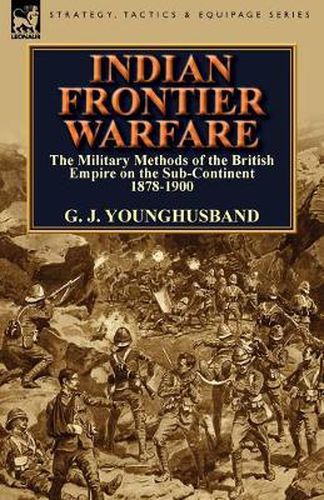Readings Newsletter
Become a Readings Member to make your shopping experience even easier.
Sign in or sign up for free!
You’re not far away from qualifying for FREE standard shipping within Australia
You’ve qualified for FREE standard shipping within Australia
The cart is loading…






This title is printed to order. This book may have been self-published. If so, we cannot guarantee the quality of the content. In the main most books will have gone through the editing process however some may not. We therefore suggest that you be aware of this before ordering this book. If in doubt check either the author or publisher’s details as we are unable to accept any returns unless they are faulty. Please contact us if you have any questions.
The tactics of the British military during the era of ‘the Great Game’ By the end of the Indian Mutiny of 1857, the British Empire had secured the Indian sub-continent as the most significant jewel in the imperial crown. It is in the nature of empires that having expanded to their geographical limits, they must then turn their efforts to the consolidation and security of all they have won. Naturally, for the British at that time, it was upon India’s frontiers-beyond the limits of perpetual imperial control and power-that the order of the the ‘Raj’ was most regularly threatened, tested and compromised. The British and Indian armies campaigned and fought their most significant engagements from the last decades of the 19th century to the outbreak of the First World War in the jungles of the east and most especially in Afghanistan and the tribal regions of the North-West Frontier. The warlike peoples of India’s frontiers proved perennially troublesome, enabling the British by constant engagement to become masters of the art of colonial warfare. This book, written by an acknowledged expert, examines the business of Asiatic warfare as the British knew it during the later 19th century. It will be an invaluable resource for everyone interested in the period and for those interested in understanding the difficulties that these regions and their native peoples pose in the conflicts to the present day. Each branch of the late Victorian British and Indian armies is appraised and considered in turn and examples of its greatest achievements and errors are analysed by Younghusband. Many of these actions occurred during the Second Afghan War-and other tribal conflicts-of the mountainous north-western region, but the military methods employed in the campaigns in Assam and Burma are also evaluated. A vital book for all those who wish to understand the finely tuned and efficient military machine the colonial period British army became.
Leonaur editions are newly typeset and are not facsimiles; each title is available in softcover and hardback with dustjacket.
$9.00 standard shipping within Australia
FREE standard shipping within Australia for orders over $100.00
Express & International shipping calculated at checkout
This title is printed to order. This book may have been self-published. If so, we cannot guarantee the quality of the content. In the main most books will have gone through the editing process however some may not. We therefore suggest that you be aware of this before ordering this book. If in doubt check either the author or publisher’s details as we are unable to accept any returns unless they are faulty. Please contact us if you have any questions.
The tactics of the British military during the era of ‘the Great Game’ By the end of the Indian Mutiny of 1857, the British Empire had secured the Indian sub-continent as the most significant jewel in the imperial crown. It is in the nature of empires that having expanded to their geographical limits, they must then turn their efforts to the consolidation and security of all they have won. Naturally, for the British at that time, it was upon India’s frontiers-beyond the limits of perpetual imperial control and power-that the order of the the ‘Raj’ was most regularly threatened, tested and compromised. The British and Indian armies campaigned and fought their most significant engagements from the last decades of the 19th century to the outbreak of the First World War in the jungles of the east and most especially in Afghanistan and the tribal regions of the North-West Frontier. The warlike peoples of India’s frontiers proved perennially troublesome, enabling the British by constant engagement to become masters of the art of colonial warfare. This book, written by an acknowledged expert, examines the business of Asiatic warfare as the British knew it during the later 19th century. It will be an invaluable resource for everyone interested in the period and for those interested in understanding the difficulties that these regions and their native peoples pose in the conflicts to the present day. Each branch of the late Victorian British and Indian armies is appraised and considered in turn and examples of its greatest achievements and errors are analysed by Younghusband. Many of these actions occurred during the Second Afghan War-and other tribal conflicts-of the mountainous north-western region, but the military methods employed in the campaigns in Assam and Burma are also evaluated. A vital book for all those who wish to understand the finely tuned and efficient military machine the colonial period British army became.
Leonaur editions are newly typeset and are not facsimiles; each title is available in softcover and hardback with dustjacket.